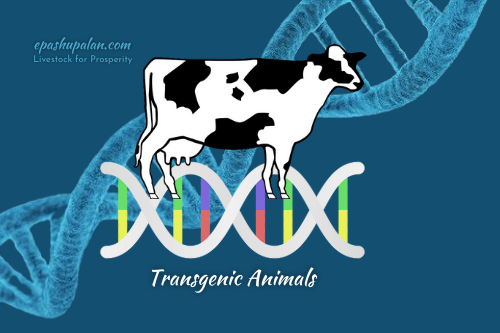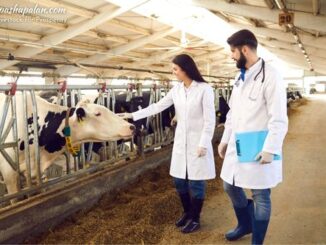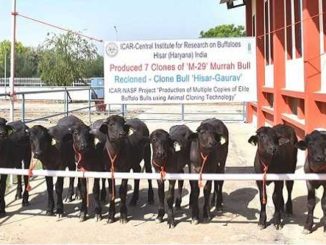In the last two decade there is tremendous development in recombination DNA technology. This enables the scientist to isolate & modify gene in such a method that will permit reconstructed advantageous gene to be introduced into cattle genome.
Transgenic animals are those animals whose genetic make up is improved by introducing DNA from source other than parenteral germ plasm namely recombination DNA technique.
By using this technique animal is produced that bear trait of economic importance. Example of these traits are growth, lactation, reproduction and production of pharmaceuticals required in dairy industry.

Transgenic animals is produced by adopting four major steps
- The desired gene must be identified, isolated & prepared for insertion into a fertilized egg.
- The host embryo must be obtained for insertion of the gene.
- The desired gene must be transferred to host cell.
- The recombinant embryo must be duplicated. Such multiple embryos are to be transferred to recipient cows which are earlier synchronized.
The advantage of technique
- Transgenic cow is produced with modified composition. It is possible to reduce lactose and fat content and nutritional value in protein.
- Appropriate gene of mammary gland can be modified so that it produce protein of biochemical importance. This can be harvested from milk.
Gene transfer technique
There are three methods by which gene can be transferred into pre-implantation embryos.
- By using viral vectors
- Micro-injection method
- Insertion of DNA at specific predetermined site with the genome of stem cell.
Limitation
- Only few genes of commercial importance can be manipulated.
- Genes which stimulate growth or enhanced food conversion may also have adverse effect of general health.
Chimeras (Combining of embryonic cell)
Mammalian chimeras are such animals in which the cell populations are derived from more than one fertilized egg or more than two gametes.
- These gametes are made up of one or other cell lines as such their progeny are non-chimeric and normal animals.
- In cattle where there are twin foetus due to vascular anastomoisis natural chimeras are seen.
- Artificial chimeras are easily produced by combining embryonic cells by micromanipulation.
The advantages of chimeras
- Research in fundamental aspect of cell linkage, determination and differentiation.
- Production of genetically identified multiples, effective interspecies pregnancies and incorporating “genetically engineered” cell into germ line to produce monogenous uniperental animal.
- Conservation of mammals which can be helped by transferring their embryo to more readily available recipients from related species.
Methods adopted to produce chimeric embryos
- Aggregation method
In this method two blastomeres are brought together to form aggregation chimera even if they originate from correlated species. In cattle a 5-6 days morula is taken and after splitting it is combined with another demiembryos.
- Injection chimera
In this method ICM (indifferentiated cell) is injected into the trophoblast or in entire blastocyst.
This method is also adopted to produce non chimeric offspring by interspecies embryos transfer b/w sheep & goat.





Be the first to comment